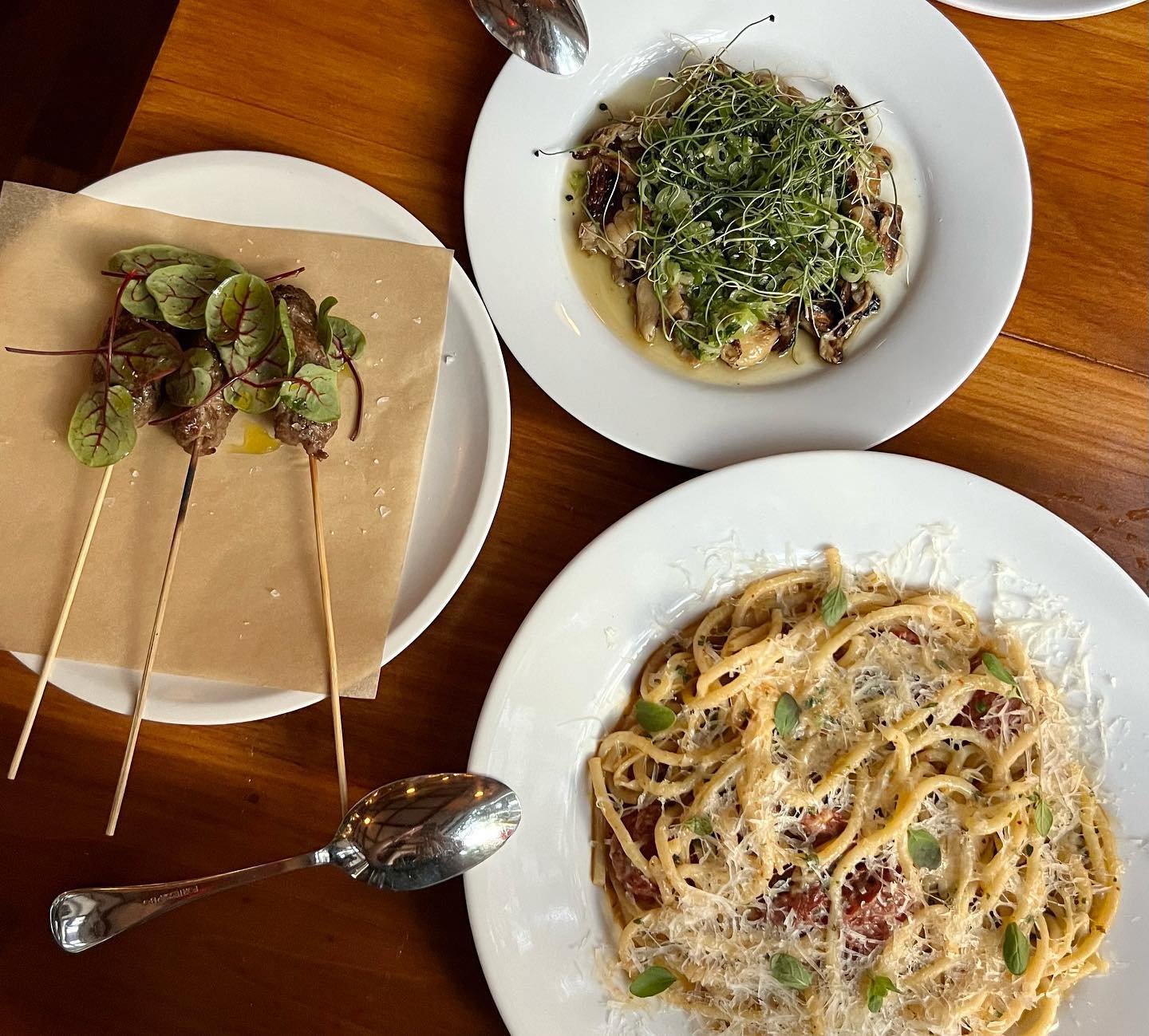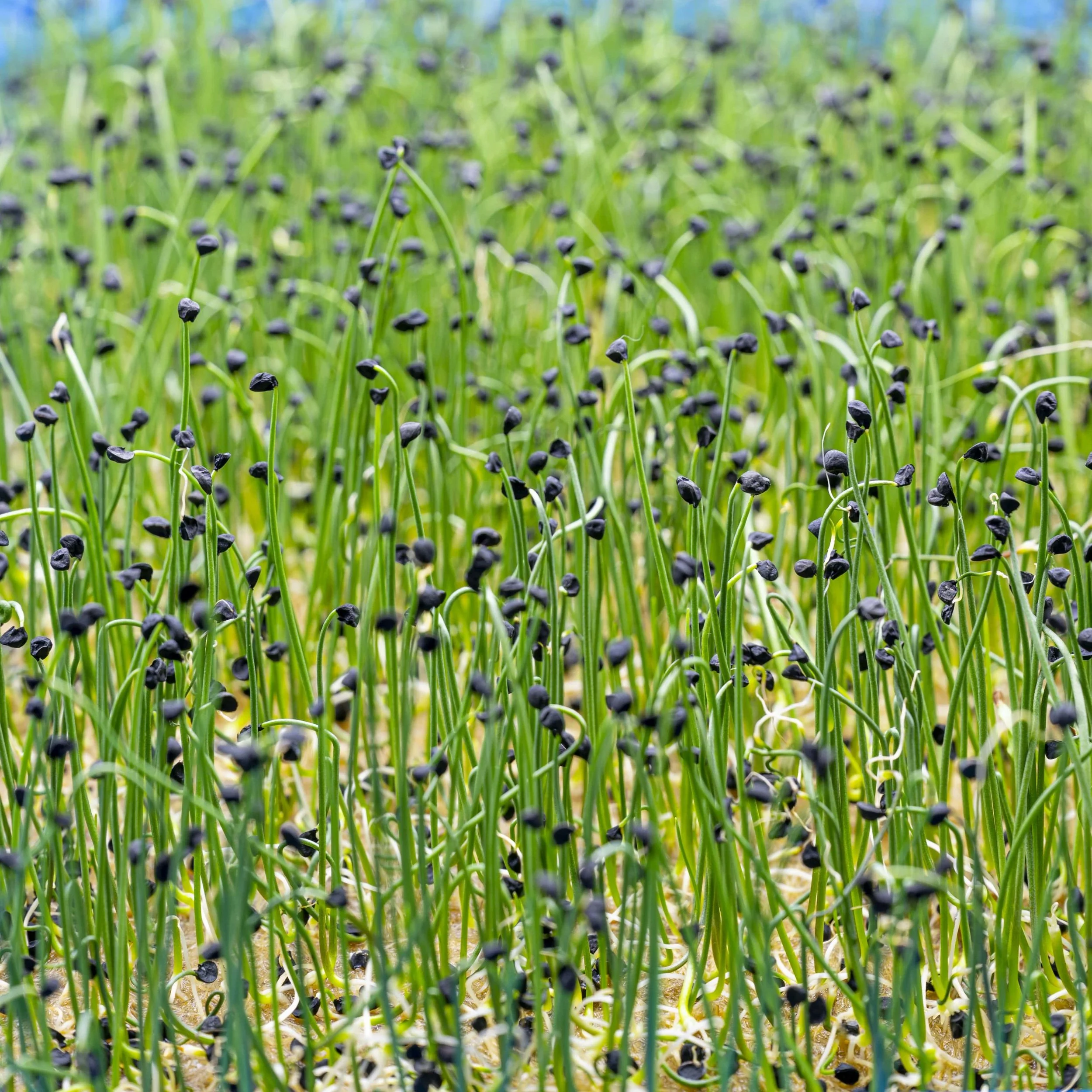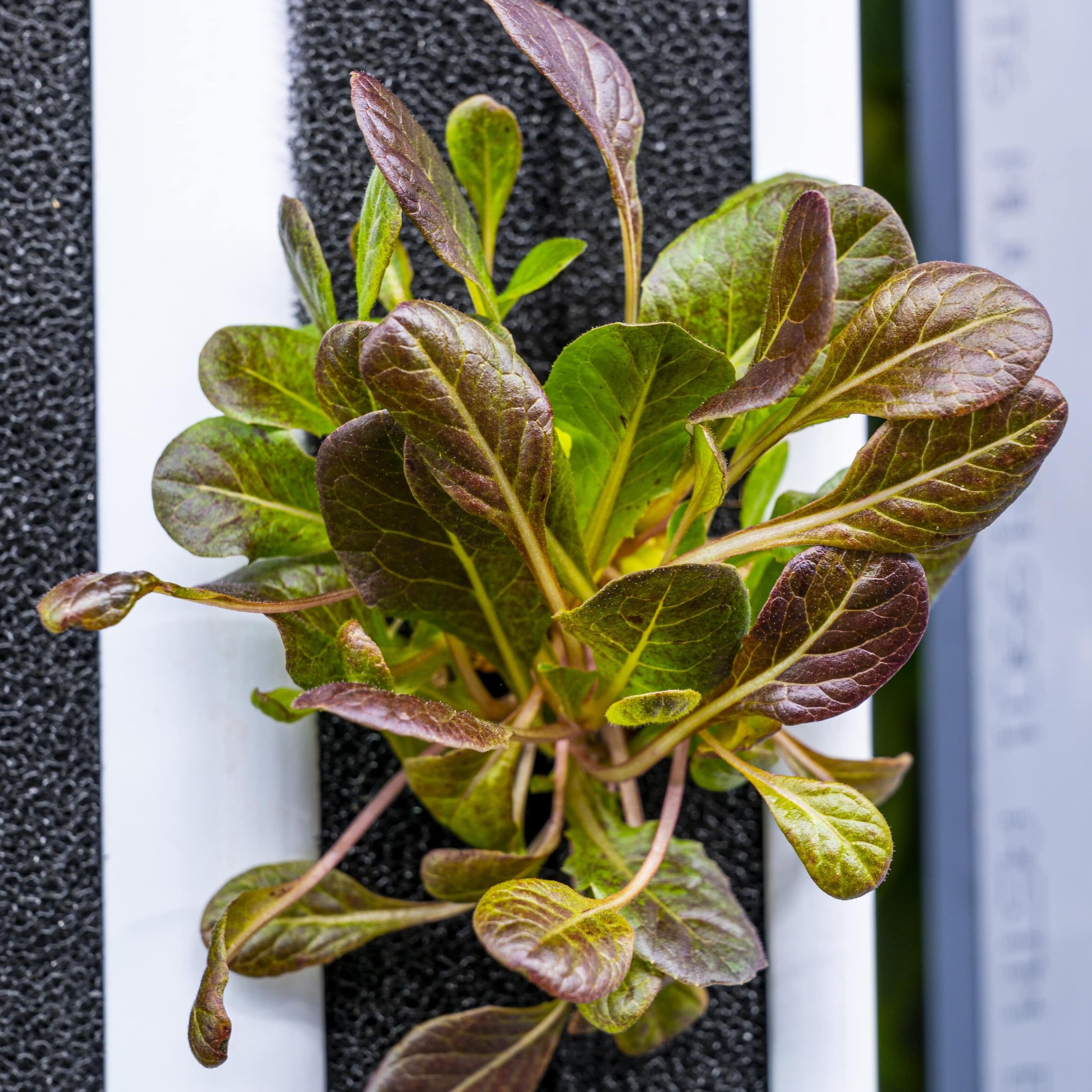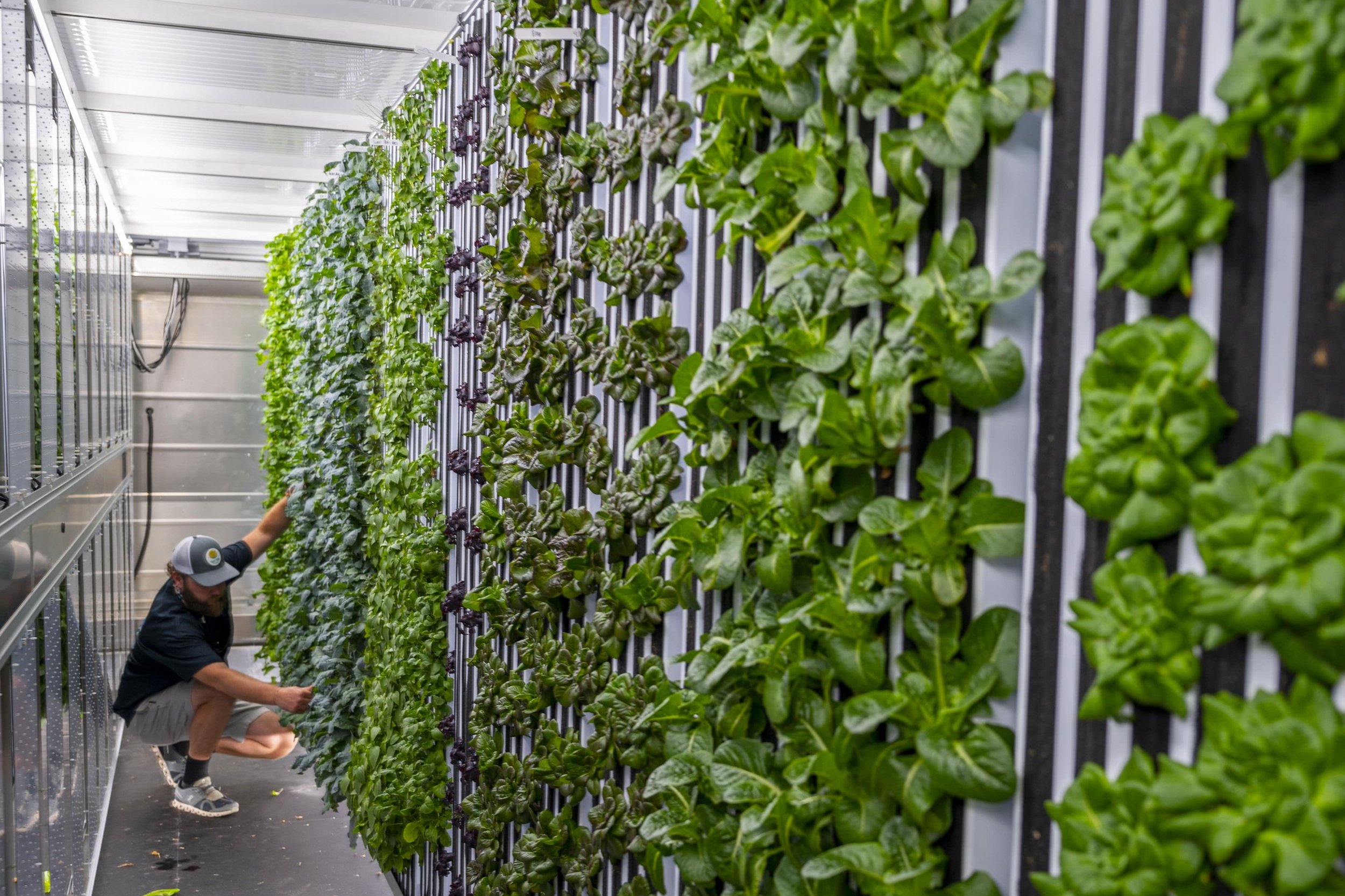Hamilton Horne’s Top 10 Tips for How to Sell Produce to Restaurants
Hamilton Horne is the highly successful entrepreneur behind King Tide Farms, a Freight Farming business in Charleston, SC. He sells produce to the city’s high-end restaurants, whose chefs love the microgreens, flavorful leafy greens, and herbs that he grows.
Building relationships with chefs can be intimidating, so Hamilton is giving us the inside scoop on how to sell produce to restaurants.
Hamilton’s Tips for Selling to Restaurants
1. Be a sleuth: Research your market.
What are the top restaurants and chefs in town? Do your research on the local food scene to find out. Listen out for the restaurants everyone talks about. Keep an eye out for restaurants in the news.
One sneaky way to investigate? Go on Instagram and scope out which chefs proudly post pictures of their food. Target those chefs and their restaurants. They’re the ones who will be excited to work with you. Instagram messages are also a great way to start your initial conversation with chefs.
Hamilton advises, “Go on [chefs'] Instagram, find their restaurant, and have a little pre-saved conversation that you can copy and paste to each one. Just a little bit about you, a quick elevator pitch. Don't tell them everything, because then they don't even need to meet you. Just give them a little bit to hang onto. And they'll get back to you!”
2. Find an excuse to drop off produce when the chef is at the restaurant.
This stunt pays off with big ROI. Use your sleuthing to figure out when a chef you’ve been in conversation with is at their restaurant. Ask for five minutes of their time and tell them “I’m going to be in the area. I’ll drop by with some produce for you to sample.” (Even if the only reason you’d be in the area is to stop by the restaurant.) This allows your produce to speak for itself. Once the chef has had a taste, you’re already halfway to making a sale.
It’s important to go while the chef themself is at the restaurant. Otherwise, your produce samples are likely to be tossed in the walk-in cooler by a well-intentioned prep cook and forgotten for days.
3. Have an open dialogue with chefs.
First and foremost, listen. Ask chefs about their pain points and listen as they explain their frustrations. When they’ve finished explaining, identify how you can provide a solution. Talk about the ways that your produce and services can relieve those pain points.
Continue the conversation after you’ve made the initial sale to build your relationship with chefs and keep them as customers.
4. Get “eight more quarters” for your product.
This is Hamilton’s way of saying: Understand your value and get more money for your product.
Those who are less comfortable with sales may price their produce too low, but this is doing yourself a disservice. Don’t undervalue your work or your product.
To do so, understand the value propositions of produce grown in a Freight Farm. It’s hyper-locally grown, pesticide-free, high-quality, and unique. Since hyper-local produce is fresher when it arrives at a restaurant’s kitchen, it’s also longer-lasting than standard produce, which means more bang for a restaurant’s buck and less waste. It’s another reason that you can price your produce at a higher rate than standard produce.
Beyond your produce, you offer something that distant large-scale farming operations never could: service. Highlight your services — like tailored crops and on-demand deliveries — and the ways they are an asset to the chef.
Communicate these value propositions and price your produce for restaurants accordingly. Get eight more quarters — because they add up!
5. Know your limits.
Learn what qualifies a small, medium, and large restaurant and what selling produce to each would entail. Consider necessary quantity, delivery schedule, and your own capabilities. Understand what you can support and only target restaurants that will be sustainable for your business.
6. Deliver what you promise and more, but never less.
Be a reliable partner to restaurants. Chefs value consistency and quality. For example, Hamilton has worked with chefs who are particular about the size of the leaves they purchase. He’s had chefs call him after a delivery and say, “Those leaves of basil you delivered were all different sizes.” Hamilton had to put pride aside and promise to do better the next time.
Understand what chefs are looking for and deliver what you promise. Strive to never over-promise or under-deliver. If you’re realistic about what you promise, then you leave room for yourself to go above and beyond. Save a chef who’s running low on produce with a last-minute produce delivery. Deliver produce that’s even fresher and tastier than you said it was.
7. Be a friend, not a salesman.
"Salesmen come in the front door. Your friends come in the back door." says Hamilton. Approach chefs as peers and not as the object of your sale. Find the kitchen back door and use it when approaching chefs. Bring farm swag for kitchen and restaurant staff. Treating them as partners and friends helps to build your relationship.
8. Treat everyone at the restaurant respectfully.
Not just the chef and the restaurant manager, but also the dishwasher, the prep cooks — even the guy cleaning the toilets. Chefs want to work with people who truly care about their restaurant and all the people who keep it running.
9. Don’t be loyal to the restaurant. Be loyal to the chef.
Build loyalty with the human, not the establishment.
In doing so, you build a cushion for your business. Chefs make produce purchasing decisions, not restaurant owners. But chefs often move from restaurant to restaurant. If you prioritize loyalty to a restaurant, you’re likely to lose their business if the chef moves on. However, if you establish loyalty with a chef, they’re likely to continue purchasing from you even if they move to another restaurant.
10. Build a safety net.
Don’t put all your eggs in one basket. Sell to many different chefs — that way, if you lose one customer, your business doesn’t take a giant hit. Hamilton sells to 15–20 different restaurants!
Similarly, if you’re considering growing a specialty crop at a chef’s request, make sure multiple chefs will buy it before dedicating your time, energy, and farm space to it. This way, if a purchase agreement for that specialty crop falls through, you aren’t left with a ton of produce and no one to buy it.
Hamilton is wise beyond his farming years!
Want to learn more business tips from Hamilton? Watch our webinar and read our case study to hear his story and advice.













